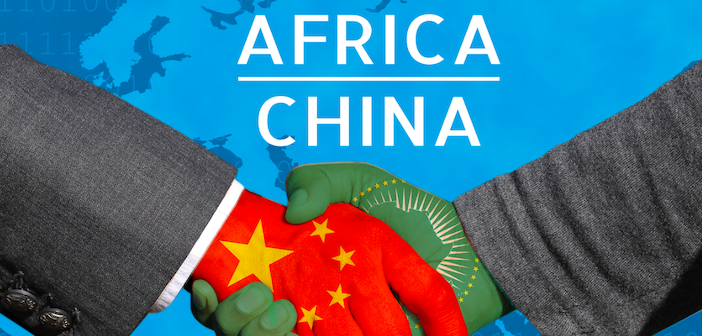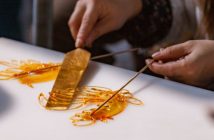In America, February marks the celebration of Black History Month, a much-needed look at all the incredible and impactful contributions African Americans have made to that country specifically. While the US has a particularly fraught and complicated relationship with its black citizens, such that a month which highlights their role in shaping American innovation and events is entirely necessary, the Black diaspora has touched myriad corners of the world, and in no uncertain terms, Beijing specifically.
To help us put a Beijing spin on Black History Month, and better understand the black and African communities here in our host city, we spoke with Miatta Momoh, co-founder and business development manager of Kente & Silk, a local enterprise which works to strengthen the bonds between Africa and China.

Miatta Momoh
Please introduce yourself!
My name is Miatta Momoh, and I’m a Sierra Leonean who has loved exploring the beauty of African culture in Beijing. August 2020 will officially mark my fourth Chinanniversary, which feels like the shortest and longest time. I am now based in Beijing as the co-founder and business development manager of Kente & Silk. Before this, I lived in Beijing as an inquisitive Peking University MBA student, who particularly enjoyed learning outside the lecture rooms. I quickly discovered exciting ways to engage with Beijing’s abundant African and entrepreneurial community. Before that, I never knew that Beijing would become my second home away from London, where I was working in media for over a decade.
Can you tell us a little bit about Kente & Silk?
Kente & Silk are a diverse group of consultants, academics, writers and creatives turning the status quo of Africa-China relations in a new positive and more balanced direction. Our social enterprise is building better business and ‘people to people’ relationships in this dynamic space. We do this through innovative African-centric events and management consulting. Kente & Silk are covering ground in China with events like our third annual Beijing Africa Week on May 23 and Africa with initiatives like our second deep-dive trip to Rwanda in partnership with Philanthropy in Motion, this July.
We often talk about “Black History” and “Black Culture” as if it were some sort of unchanging monolith. However, the truth is that the culture and history of black people can vary wildly depending on geography. Can you give us a little insight into a few different cultures and what makes them so unique?
Culture is such a phenomenal gift from God! Living in Beijing has given me a new perspective of the depths of this. Black Culture is something that relates to specifically the African diaspora experience and it’s often associated with African American culture – so it is vast, and constantly changing. Black History Month is a great way to highlight the benefits of looking back in history in order to have an inspired look into the future. It echoes the sentiments of “Sankofa” a saying in Ghana’s Twi language that translates to “Go back and get it” (san – to return; ko – to go; fa – to fetch, to seek and take) or “go back to the past and bring forward that which is useful”.
Black History should, therefore, be recognized every day and this month of February in America traditionally pays homage to pioneering figures from the African-diaspora that have been instrumental in creating societal changes in areas like black discrimination. I am passionate about Africa-China relations, so I am particularly excited about witnessing the rise of African Americans delving deeper into African culture and history from Beijing too.
This increased interest has certainly been displayed in 2019’s “The Year of Return” initiative championed by Ghana’s President Nana Akufo-Addo. He encouraged the African diaspora to return to Ghana to specifically celebrate and connect with their rich African culture, that goes beyond the transatlantic African slave trade 400 years ago. I love seeing images of African Americans paying homage to their roots, in awe of Accra’s beauty and adorned in Kente (ken-ˌtāe) cloth. This is a unique traditional and contemporary Ghanaian fabric, comprised of cotton and silk that is interwoven, originally worn by the royal Ashanti tribe but it is now iconic across Africa. That’s why Kente represents Africa and Silk represents China, as well as the Silk Road in the meaning behind Kente & Silk.
There are definitely great instances where from Beijing you can also immerse yourself in African culture and history too. For example, I have participated in fantastic Djembe drumming classes lead by Ugandans and Cameroonians from the dance company Abbe Dance. Their workshops are highly interactive and share history and culture from places like Sierra Leone with the whole family. This West African drum instrument dates back to 1300 AD and is another example of a West African culture transcending across other regions of Africa, America and the world.
Actually, Kente & Silk often use Djembe drumming in our flagship events to officially open the ceremony. In Beijing, I am now exposed to cultures across the continent and this access allows first-hand cultural insights from intimate family histories to bigger historical discoveries like how coffee was found in Ethiopia in the seventh century. It’s been interesting to learn this history as well as the Ethiopian coffee drinking ceremonies attached today that are a fundamental element of daily social interactions in Ethiopian communities.
Black History Month has been around for a while in the United States, but why do you think it’s important for other countries to learn about the impacts of black folks across the globe?
The Black History taught in schools is often limited and African history is often non-existent. History allows us to gain deeper insights, that can help inform ignorance which can help build understanding for better relationships. I am reminded by the Nigerian novelist Chimamanda Ngozi Adichie’s Ted Talk “The Danger of a Single Story”, that echoes why one-sided negative African narratives in the West has fueled many misconceptions of African culture.
Spotlighting some of the most amazing African diaspora inventors, scientists, leaders and pioneers can allow people to appreciate key contributions that have built up society today. There is such a rich and diverse black history that I also encourage people to not just rely on what is written online and in books but to also seek out dialogue with the African diaspora in Beijing too.
Short of honoring the contributions that Black Americans have made to that country specifically — i.e. Rosa Parks, Robert Abbott, Bessie Coleman — what else can people do to learn about the kaleidoscopic and multi-faceted nature of Black Culture? Are there fun face painting activities, dances to learn, books to read, or foods to cook?
BlackExpo is a great example of the Black Culture kaleidoscope you describe. From Botswana to Boston they offer a black business market that delivers African and African American cultural experiences through goods, food, dance, music and more.
Kente & Silk also use culture to engage young children and families in African art, literature and dance. These elements are part of our Art Afrik event and you could try these creative African cultural activities at home:
South African tribal face painting – There are over 3,000 tribes on the continent and tribal face painting is often used to share status and character. This striking effect is easy to capture with only one or two colors of paint.

Face painting at Kente & Silk’s event, Art Afrik Watoto

Face painting at Kente & Silk’s event, Art Afrik Watoto
Call and response storytelling and singing – This influence is also seen in African American culture and calls the narrator or singer to lead their audience with their call that asks for a specific response throughout, like echoing a name, chorus or phrase that emphasized characters and points being made.

A drummer gets the party going at Kente & Silk’s event, By the Fireside, at Bookworm

The crowd enjoys call and response storytelling at Kente & Silk’s event, By the Fireside, at Bookworm
I am also a big fan of using food to get deeper insights into culture so I highly recommend trying to bake Sierra Leonean banana rice bread for a sweet hearty family treat. Click here for the recipe.
Aside from Kente & Silk, what other resources are available in Beijing for people to learn more about Black and African Cultures? More specifically, what resources are available for kids!
A lot of Beijing’s brightest Black Culture and African-centric community resources like Safari Time, BlackExpo and Abbe Dance are on hold now, however, you can always spend time with the family reading African literature by novelists like Chinua Achebe, who is responsible for the adventure tale of “Chike and the River”.
From today you can start with “Seven Spools of Thread: A Kwanzaa Story” by Angela Shelf Medearis which introduces how African culture is celebrated in African American culture. It also offers more details about Kente cloth and also offers a guide to making.
Anything else you’d like to share….
Kente & Silk’s third edition of Beijing Africa Week will return from May 23 to May 29. This will be a week of activities celebrating African culture in China, and this year’s theme is Sankofa. So, we are looking forward to seeing how our past experiences and history will engage Beijing’s Chinese and Expat communities, including families this year.
Photos: courtesy of Kente & Silk, qswownews.com




